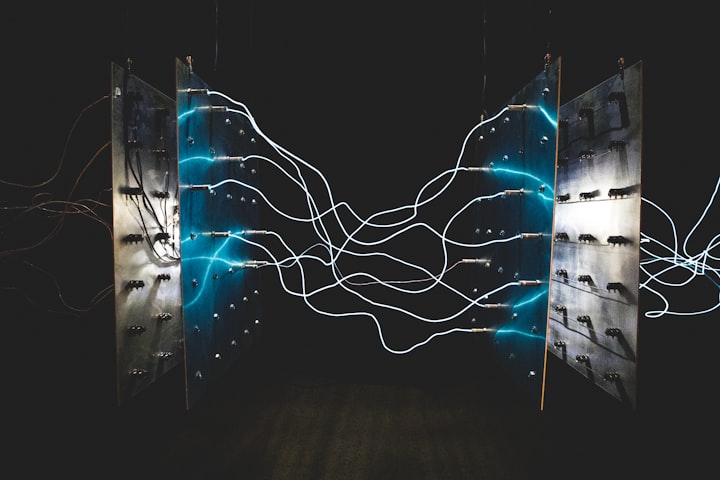Today, with the help of the night vision correction method, a number of ophthalmic problems can be solved. What makes it unique? What subtleties do you need to keep in mind for those who are going to use it?
It is based on the use of special optical devices - night lenses. A person puts them on before going to bed, and takes them off in the morning. And all day long he sees well without any additional optics - soft contact lenses and glasses. His activity is not limited by anything. He can play sports, swim, work in different weather conditions. Vision retains its clarity.

Night lenses
Today, with the help of the night vision correction method, a number of ophthalmic problems can be solved. What makes it unique? What subtleties do you need to keep in mind for those who are going to use it?
It is based on the use of special optical devices - night lenses. A person puts them on before going to bed, and takes them off in the morning. And all day long he sees well without any additional optics - soft contact lenses and glasses. His activity is not limited by anything. He can play sports, swim, work in different weather conditions. Vision retains its clarity.
Interesting. Daytime contact lenses and glasses improve vision while we are wearing them. And here we get the opposite effect: the lenses work when they are removed. How do they work?
Night lenses have the effect of changing the shape of the cornea of the eye. Their mechanism of action can be explained as follows.
In the optical system of the eye, it is the cornea that refracts light the most. From above, it is covered with several layers of epithelium. Moreover, this epithelium is constantly being updated. And taking advantage of this natural property, we can change its thickness with the help of lenses. And due to this, with the help of a lens of a certain design, influence the patient's visual acuity.
While the person is asleep, the lens applies pressure to the cornea. This effect is produced indirectly, through the lacrimal fluid. Thanks to him, the epithelial cells begin to flatten and redistribute. In some areas there are fewer of them, in others - more. And gradually the cornea takes on the desired shape.
So, by reducing the thickness of the epithelium in the center of the cornea, we treat myopia. And vice versa: by increasing its volume in this zone, we correct hyperopia.
This process of changing the cornea takes about 8 hours. This is why night lenses are worn throughout the night.
In the morning, the lenses are removed, and the effect achieved overnight is preserved. But since the cornea is a living structure, it regains its previous shape after 12-18 hours. The lens action is lost. And to resume the effect, you need to put on the lens again at night.
So these lenses have to be worn every night. And how long?
Treatment using this technique can last for several months, a year or even several years.
But it's important to replace your lenses as they wear out - usually once a year. After all, like any objects, they age. Microcracks appear in them, deposits of proteins, mucus, fat accumulate. That is, there is an environment for the development of microbes. And such lenses become unsafe.
What vision problems can be corrected with night lenses?
Today, night lenses are used for two purposes.
The first goal is reversible, non-surgical vision correction in adults. It can be achieved with mild to moderate myopia, moderate hyperopia and astigmatism.
The second goal is to inhibit myopia in children and adolescents. Here we are talking about the rapidly progressive loss of vision, which has become so common in modern schoolchildren.
Today it has been proven that there is no safe, so-called intelligent myopia. Any myopia carries the risk of complications that can occur years or even decades later. Therefore, the approach is as follows: if a problem appears, treatment should be started immediately. Night lenses can be used from 7 years old, starting with myopia of 0.5–0.75 diopters.
Of course, the night correction method is not a panacea for all problems. He has a limit of possibilities. The best effect is achieved with myopia up to 4–4.5 diopters. Slightly less, but the result is also good in patients with myopia up to 6 diopters and farsightedness up to 3-4.
For more significant violations, the method is also applicable. But then, for a complete vision correction, a person will additionally need glasses or soft day lenses.
By the way, with the help of night lenses, you can predict the effect of laser vision correction. Let's say a person is prescribed an operation to correct myopia. And he doubts whether it is worth doing. Nevertheless, the effect of the operation is irreversible.
In this case, we can make night lenses for him. The patient is diarrhea for 6-12 months. And according to his own feelings he will orient himself how to continue to be. After all, the effect of a night lens on the cornea is similar to the effect of its laser "evaporation". For example, both after a laser and when wearing night lenses, some people may see slightly worse at dusk. Some people experience halos and glare in front of their eyes. Or the sensitivity of the eyes decreases.
Can't night lenses cause complications? After all, at night your eyes are closed and you hardly breathe under the lens?
From the point of view of physiology, at night the eyes "breathe" differently than during the day when the eyes are open. The nutrition of the cornea is rearranged at night. She begins to take more oxygen not from the air, but from the intraocular fluid. And night lenses do not aggravate this process in any way.
Secondly, orthokeratological lenses are made from breathable materials. They allow oxygen to pass through and do not interfere in any way with metabolic processes in the eye.
However, the safety of such treatment also depends on the patient himself. He must take good care of his night lenses. It takes time, money, accuracy. Then no complications arise.
For cleaning and storing night lenses, disinfectant solutions, special shampoos, and peroxide systems are used. Optical products must be stored strictly in containers. Change the solutions in them every day. It is important to ensure that the lenses do not overheat or come into contact with cosmetics. Do not wash the lenses with tap water. After all, it can contain microbes that can cause an eye infection.
And we must also remember that any technique has contraindications. If they are neglected, the risk of complications increases.
Orthokeratological lenses cannot be used for many eye diseases: keratoconus and keratoglobus, glaucoma, cataracts, dry eye syndrome, inflammatory diseases of the eyelids, cornea, conjunctiva, logophthalmos, nystagmus, lens astigmatism. Some common diseases are also prohibited - diabetes, immunodeficiency, oncology.
You can not wear night lenses and with an exacerbation of allergic conjunctivitis. Otherwise, the inflammation that develops in the anterior part of the eye can be aggravated.
How and where can you choose night lenses?
Exclusively at an ophthalmologist in a modern clinic.
First, the doctor examines the eye itself and the optics of the eye. It evaluates the condition of the cornea using special tests. She is photographed using colored dyes. Tear production and the condition of the tear film are also analyzed.
The examination takes at least an hour. And only after it, the doctor can say whether the technique is suitable for a given patient.
A person receives lenses of a standard type right there. Still, they are not as effective as individual lenses made with all the characteristics of the eyes in mind. It takes 2 to 7 days to make them.
When the lens is ready, they try it on and offer to wear it. The physician then evaluates the primary result of use. If all is well, the patient is taught how to care for the lenses and is allowed to go home.
Unlike daytime contact lenses, nighttime lenses are quite tough. Do they interfere with sleep?
At first, night lenses can cause slight discomfort. It takes some time to get used to them. Sometimes the doctor prescribes moisturizing drops with hyaluronic acid to improve tolerance.
But the lenses do not disturb the quality of sleep. They are simply uncomfortable to be in while awake, since a person still feels their presence.
In the process of night vision correction, a person should regularly visit a doctor. The first visit is done the morning after the first use. The second - in a week, the third - in a month, the fourth - after three months. At each appointment, the doctor assesses how the lens works, whether there are any complications.
If there is redness, irritation of the eye, excessive formation of tears, the use of lenses is suspended and treatment is carried out. But at this time, a person can safely wear glasses, which remain the easiest and safest way to correct vision.






Comments
There are no comments for this story
Be the first to respond and start the conversation.